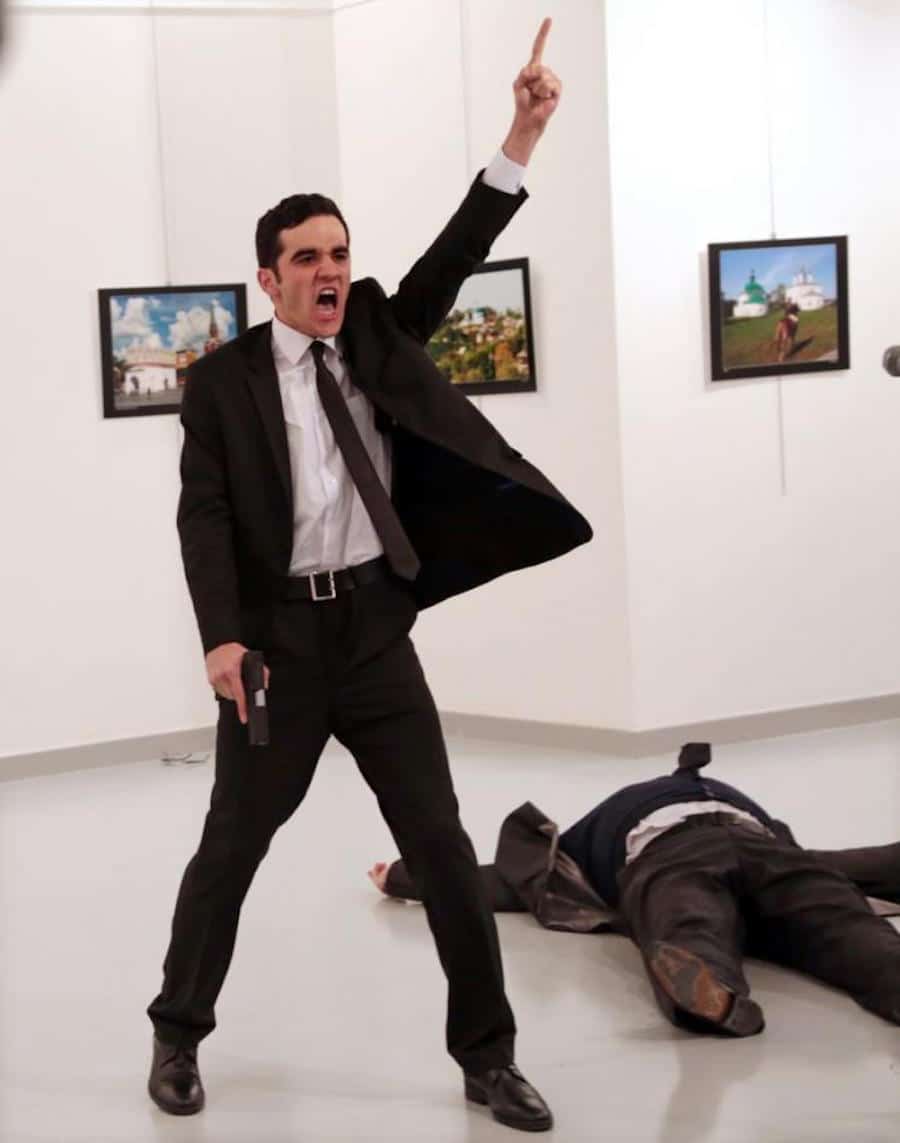
‘An Assassination in Turkey’ by Burhan Ozbilici. World Press Photo of the Year.
The winning images of the 60th annual World Press Photo Contest have just been released. This year more than 5,000 photographers from 125 countries submitted 80,408 images. But in the end, it was Burhan Ozbilici’s heart-stopping photo of the assassination of the Russian ambassador to Turkey that was named World Press Photo of the Year.
“It was a very very difficult decision, but in the end we felt that the picture of the Year was an explosive image that really spoke to the hatred of our times,” explained jury member Mary Calvert. “Every time it came on the screen you almost had to move back because it’s such an explosive image and we really felt that it epitomizes the definition of what the World Press Photo of the Year is and means.”
The decision is not without controversy. Stuart Franklin, chair of the jury, released an op-ed detailing his decision to vote against the image as World Press Photo of the Year, as he sees the image as morally problematic.
Notwithstanding the varying opinions, it’s undisputed that these distinguished photojournalists are at the apex of their craft. From nature and sports to contemporary issues and spot news, the best in photojournalism is represented over eight categories.
See more incredible, winning photographs from the eight categories of the World Press Photo Contest 2017.
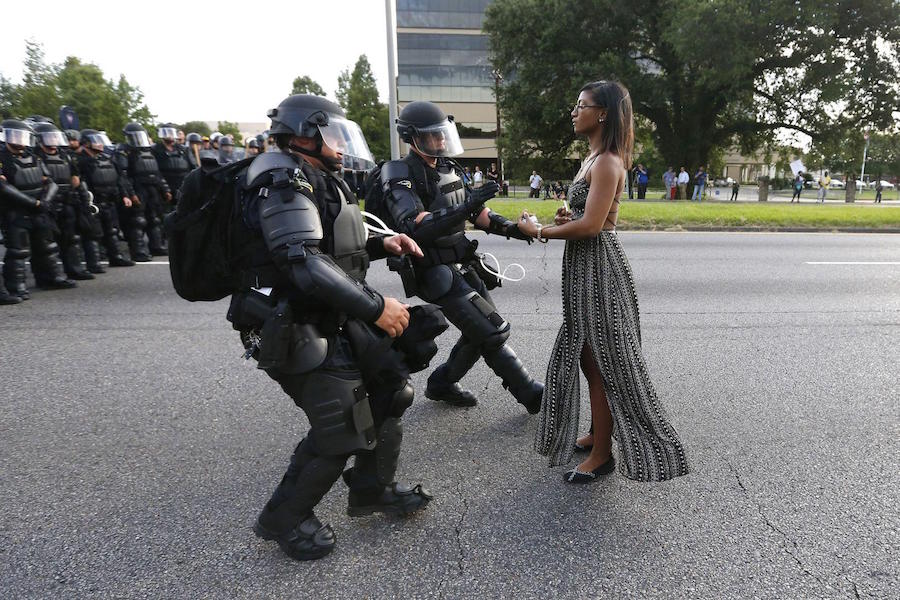
‘Taking a Stand in Baton Rouge’ by Jonathan Bachman. Contemporary issues, first prize singles.
“Lone activist Ieshia Evans stands her ground while offering her hands for arrest as she is charged by riot police during a protest against police brutality outside the Baton Rouge Police Department in Louisiana, USA.”
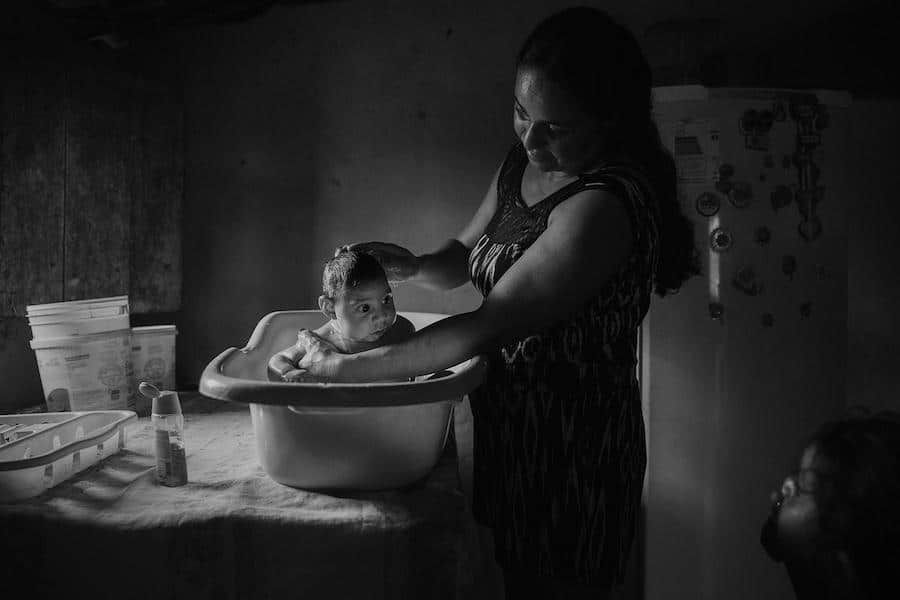
‘Victims of the Zika virus’ by Lalo de Almeida. Contemporary issues, second prize stories.
“Adriana Cordeiro Soares, 30, bathes her son João Miguel, 3 months old, who was born with microcephaly caused by the Zika virus, in her house in the rural area of São Vicente do Seridó.”

‘The Libyan Migrant Trap’ by Daniel Etter. Contemporary issues, third prize singles.
“Two Nigerian refugees cry and embrace in a detention center for refugees in Surman, Libya. The detention center houses hundreds of women escaping precarious conditions. “
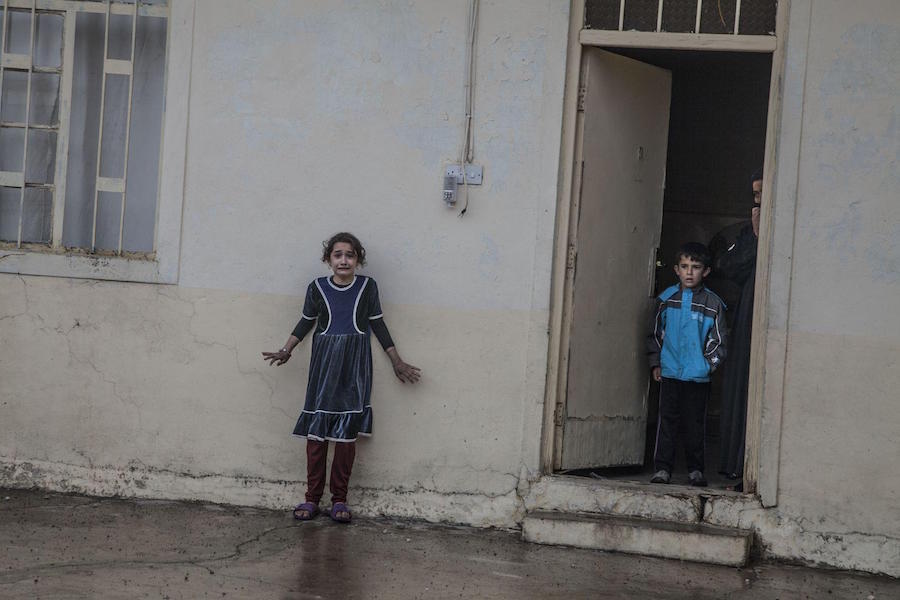
‘Offensive on Mosul’ by Laurent van der Stockt. General news, first prize singles.
“The Iraqi Special Operations Forces search houses of Gogjali, an eastern district of Mosul, looking for Daesh members, equipment, and evidence.”

‘Cuba on the Edge of Change’ by Tomás Munita. Daily life, first prize stories.
“A weathered barber shop in Old Havana, Cuba.”
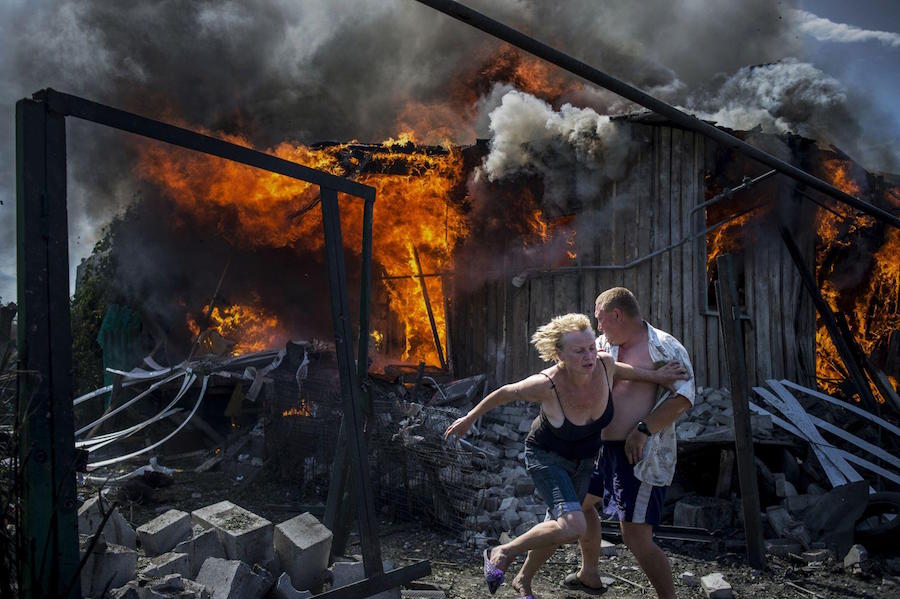
‘Black Days of Ukraine’ by Valery Melnikov. Long-Term Projects, first prize stories.
“Civilians escape from a fire at a house destroyed by an air attack in the Luhanskaya village.”
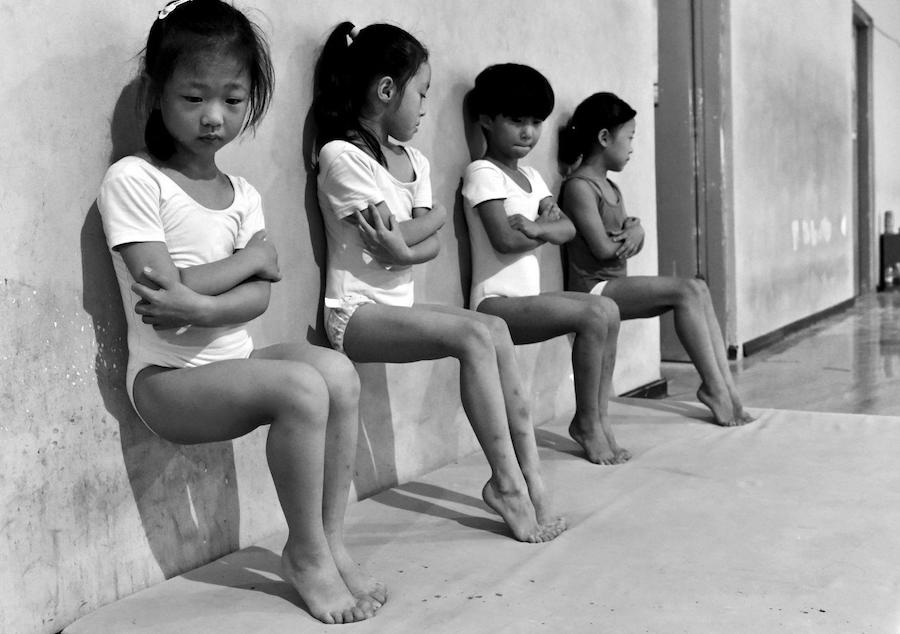
‘Sweat Makes Champions’ by Tiejun Wang. Daily life, second prize singles.
“Four students of a gymnastics school in Xuzhou, China, do toe-pressure training for 30 minutes in the afternoon.”
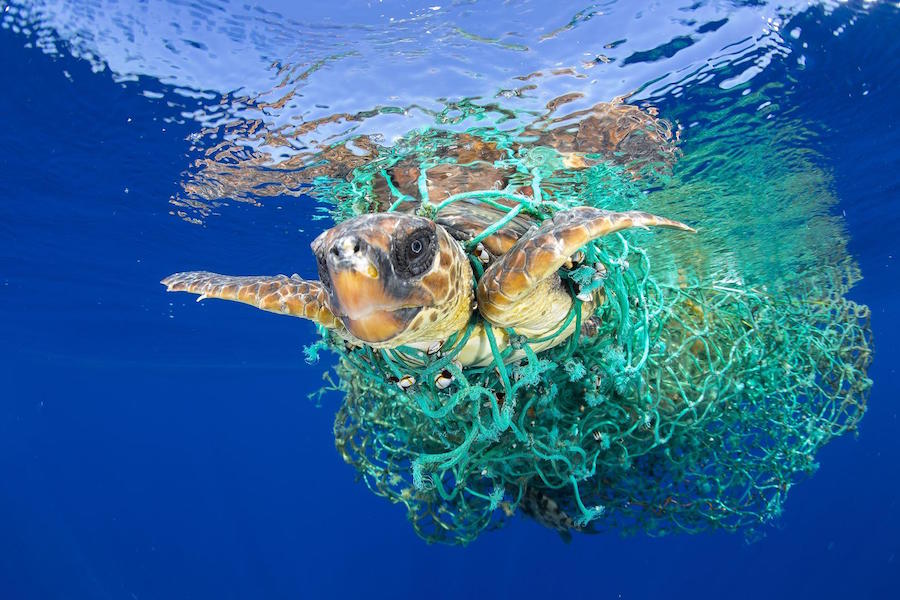
‘Caretta Caretta Trapped’ by Francis Pérez. Nature, first prize singles. “A sea turtle entangled in a fishing net swims off the coast of Tenerife, Canary Islands, Spain.”

‘Mediterranean Migration’ by Mathieu Willcocks. Spot news, third prize stories.
“Two men panic and struggle in the water during their rescue. Their rubber boat was in distress and deflating quickly on one side, tipping many migrants in the water. They were quickly reached by rescue swimmers and brought to safety.”

‘Rescued from the Rubble’ by Ameer Alhalbi. Spot news, second prize stories.
“A Syrian man evacuates an area following a reported airstrike in the rebel-held neighborhood of Hayy Aqyul in Aleppo.”

‘Copacabana Palace’ by Peter Bauza. Contemporary issues, third prize stories.
“Young Eduarda is sitting outside a window and observes the street happenings. She lives with her seven siblings in one of the five never-finished buildings of a supposed middle class condo project, not far away from Rio de Janeiro, but still far enough to be hidden from our view.”

‘Migrant Crossing’ by Vadim Ghirda. Contemporary issues, second prize singles.
“A woman is supported by two men while crossing a river, as refugees attempt to reach Macedonia on a route that would bypass the border fence.”
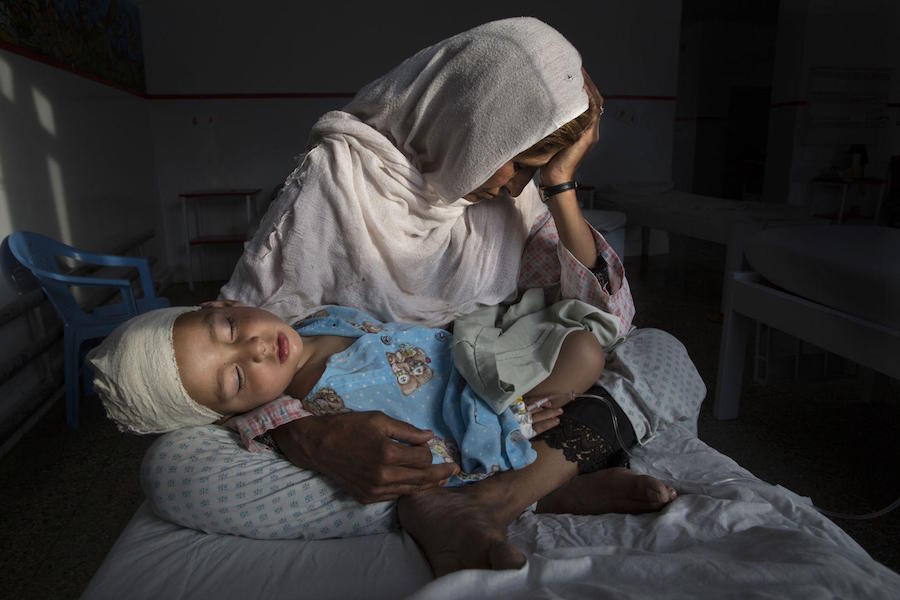
‘The Silent Victims of a Forgotten War’ by Paula Bronstein. Daily life, first prize singles.
“At the hospital, Najiba holds her two-year-old nephew Shabir who was injured from a bomb blast in Kabul.”
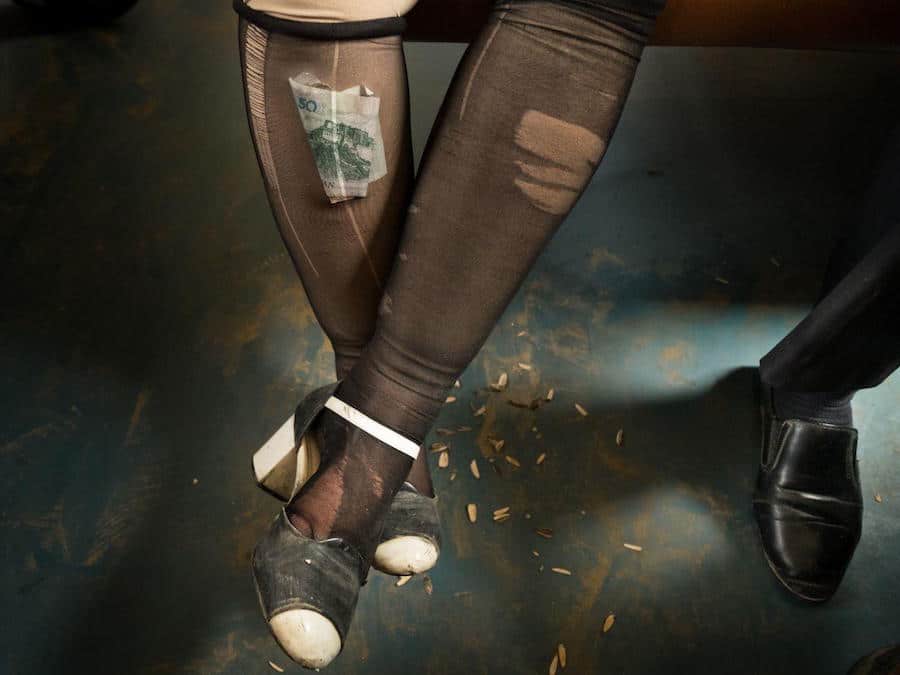
‘China’s Wild West’ by Matthieu Paley. Daily life, third prize singles.
“An Uyghur woman carries money in her stockings, a common practice. Uygur women, while Muslim, typically do not adhere to the conservative dress code that women in neighboring countries follow. On this train from Kashgar, you see a lesser known side of China. Most of the passengers are Uygur, a Chinese minority who live mostly in the west.”
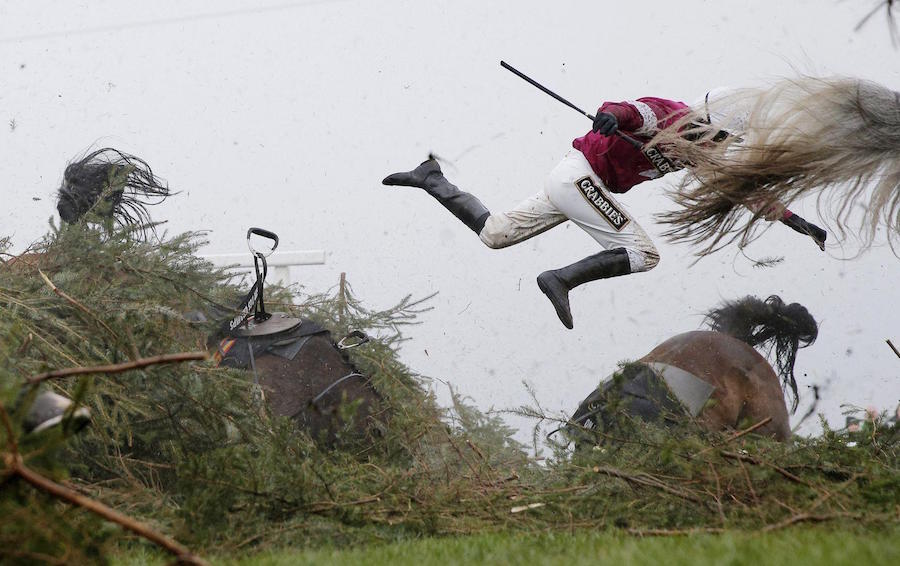
‘Grand National Steeplechase’ by Tom Jenkins. Sports, first prize singles.
“Jockey Nina Carberry flies off her horse, Sir Des Champs, as they fall at The Chair fence during the Grand National steeplechase.”

‘Rhino Wars’ by Brett Stirton. Nature, first prize stories.
“Care For Wild Africa is a donor-run organization that specializes in caring for wounded animals. They have a special focus on rhino and have taken in many rhino orphans from the poaching wars across South Africa at this time. Their latest orphan is Lulah, her mother was killed in Kruger National Park and when the rangers found her she was estimated to be one month old.”
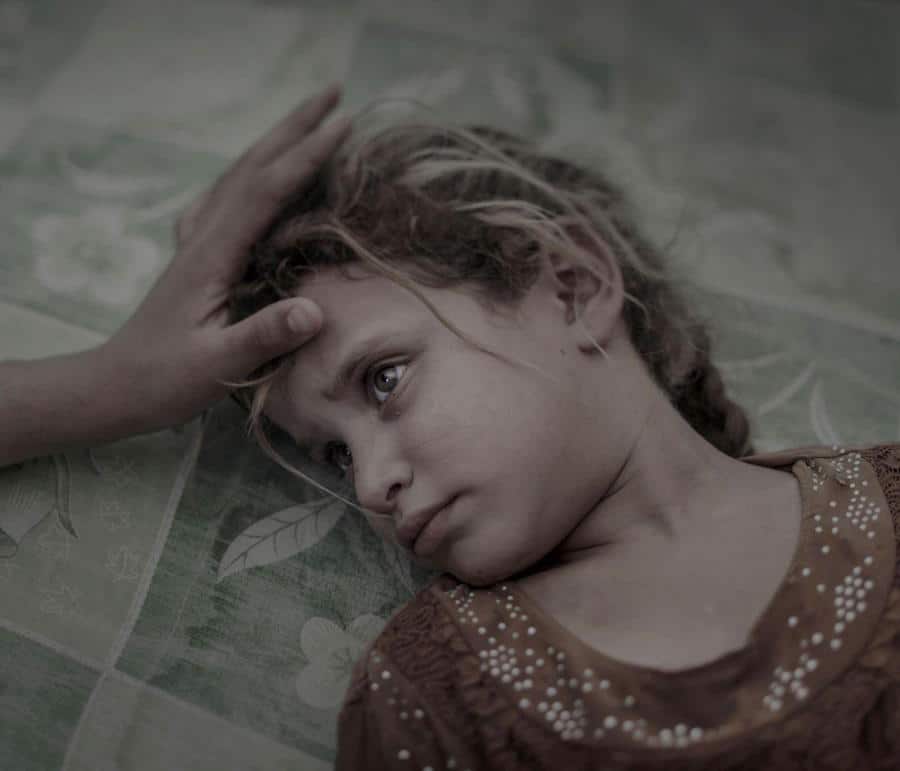
‘What ISIS Left Behind’ by Magnus Wennman. People, first prize singles.
“Five-year-old Maha and her family fled from the village Hawija outside Mosul, Iraq, seven days ago. The fear of so-called Islamic State and the lack of food forced them to leave their home, her mother says. Now Maha lays on a dirty mattress in the overcrowded transit center in Debaga’s refugee camp.”

‘Table Rock, Nebraska’ by Markus Jokela. Long-Term Projects, third prize stories.
“Kelly Freeman arrives at her wedding reception in Dubois, Kansas. Table Rock is a small rural community in Nebraska, USA, which is shown from 1992 until March 2016. It hasn’t really changed over the years.”

‘Standing Rock’ by Amber Bracken. Contemporary issues, first prize stories.
“Veterans carry an American and a Mohawk Warrior Society flag through the storm. The Mohawk flag came to prominence during the 1990 Canadian Oka Crisis, when the military confronted indigenous people in a major armed conflict for the first time in modern history.”

‘We Are Not Taking Any Prisoners’ by Alessio Romenzi. General news, third prize stories.
” Sirte, Libya, is one of the three self-proclaimed capitals of the so-called Islamic State, along with Raqqa in Syria and Mosul in Iraq. It was the first of the three to fall, with an offensive launched by the Libyan government in May 2016. It took seven months of fighting, 500 American airstrikes, the lives of 700 Libyan soldiers and more than 3,000 injured Libyan soldiers to finally declare the city free.”

‘Boys Will Be Boys’ by Giovanni Capriotti. Sports, first prize stories.
“Gay athletes have somehow nearly always encountered resistance, controversy, discrimination, and often humiliation from the sports community. Stereotypes have typically, and falsely, defined the performance of the athletes as well as their suitability to a specific discipline. Discomfort in the locker room pushed a few of Toronto’s gay rugby players to form the city’s first gay-friendly rugby team.”
World Press Photo: Website | Facebook
